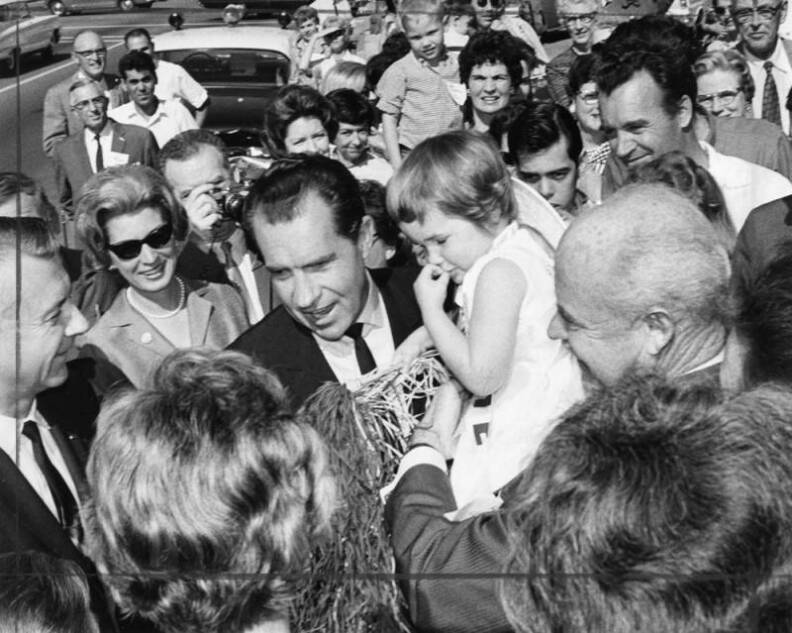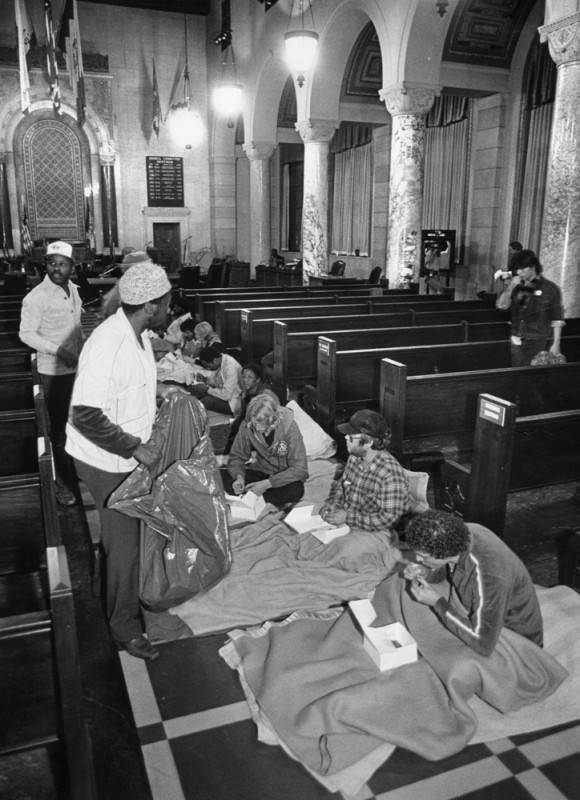Affordable housing. Simply linking those two words might get you an ironic laugh from today’s apartment hunter. But there was a time when the government did have an overall goal of helping you keep a roof over your head. While a few remnants of that philosophy still exist today, we wanted to know: How did it all start — and what happened?
We look into the complicated history of affordable housing, from a Depression-era housing crisis, through communism fears and today’s patchwork of programs.
What is affordable housing exactly?
First, let’s define our terms. Shane Phillips, housing initiative manager at the UCLA Lewis Center for Regional Policy Studies, says people can have different things in mind when talking about affordable housing.
-
It's gonna be Yankees v the Boys in Blue
-
Nonprofit's launching fundraiser to keep it afloat
-
USC study documents what residents want from trees
There’s the idea of affordable housing as in living in places that are relatively low cost compared to your income, like living on the edge of L.A. County, for example.
Then there’s what Phillips calls “capital A” affordable housing. It happens in multiple ways, including:
- Public housing (which is owned by the government)
- Subsidized housing that’s income-restricted with rent caps (built with public funding)
- Unsubsidized housing that’s income-restricted with rent caps (not built with public funds but using programs that give regulatory breaks to developers)
- Section 8 (where tenants share rent costs with the government on the private market)
A brief history of early affordable housing
The Great Depression brought an existing problem to a head: dilapidated housing stock.
According to the National Low Income Housing Coalition, it was common for families with little money to live without hot running water. These homes were seen as “blight” and many were eventually torn down.
The U.S. Housing Act of 1937 created the first federal public housing program in which states had to establish local housing authorities. The act was intended to:
Remedy the unsafe and unsanitary housing conditions and the acute shortage of decent, safe, and sanitary dwellings for families of low-income, in rural or urban communities, that are injurious to the health, safety, and morals of the citizens of the nation.
The public housing program was put on hold during World War II but was restarted with the Housing Act of 1949, which declared its goal as “a decent home and a suitable living environment for every American family.”
This act did a lot of things, including giving money to local housing authorities to buy up and rebuild slum properties and offering subsidies for them to build over 800,000 units nationwide.
Meanwhile in the early ‘30s, federal agencies that were precursors to the Department of Housing and Urban Development (HUD) had begun to help people afford homeownership.
The Federal Housing Administration, created in 1934, ushered in mortgage programs that made low down payments and long-term mortgages possible. Until then, most mortgages were written for three to five-year terms and borrowers had to have as much as half of the home’s cost on hand.
Addressing different income levels
Federal programs at that point targeted helping tenants on the very low end of the financial spectrum. Very few options existed for people in the middle — those who couldn’t afford market-rate housing but didn’t qualify for public housing.
-
The general consensus today is 30% of a tenant’s income. That's from the 1969 Brooke Amendment, which placed an income percentage limit on public housing and some other units.
-
Initially it was 25% of income — it went up later. While this applied to specific types of affordable housing, it’s become a broader societal norm that helps people decide their rental budget and is often used by landlords in rental applications.
Congress saw this gap and wanted to solve it without creating a new and costly government housing program. Their legislation, the Housing Act of 1959, marked the first significant time that financial incentives like low-interest loans were used to coax private developers into building affordable housing. These were directed toward housing that would serve moderate-income people 62 and older.
Later federal additions included a rent assistance program (and precursor to Section 8) in 1965, while other mortgage incentives came in 1968. At the end of the decade, affordable housing subsidies for private developers created hundreds of thousands of units nationwide.
How approaches changed

A significant shift in affordable housing came in 1973 when the Nixon administration placed a moratorium on federal housing programs. The following year, big changes to our housing programs were largely seen as pulling out of the construction and management game on the federal level.
Nixon was influenced by what was happening in local governments. While World War II had made public housing favorable, eventually public opinion shifted away from it, with Red Scare fears framing it as a communist system. Like many cities, L.A. leaders faced accusations of communist infiltration because of its government-led housing.
The city of L.A. once had a federal contract to build 10,000 public housing units, but it fell through in the 1950s after intense public pressure. L.A.’s last public housing construction ended with the San Fernando Gardens in 1955.
Devolution of authority
After the moratorium, President Gerald Ford introduced the Community Development Block Grant program, which gave federal dollars to local governments with “few strings attached” to do things like improve sidewalks and help rehabilitate dilapidated housing. It began what’s called the “devolution of authority” — passing on the responsibility to plan and implement affordable housing to states and cities. While there is still federal involvement in affordable housing, this program is still in use today with local authorities directing much of the implementation.
Which means that affordable housing differs from region to region. In L.A., our affordable housing is now largely private and public partnerships, while the city’s housing authority has been slowly demolishing public housing for decades and rebuilding some as mixed income housing.

In the backdrop, while rent and house prices continued to skyrocket, more and more people were squeezed out of their homes. In 1987, L.A.’s homelessness crisis had grown to such a point that City Hall was opened to shelter unhoused people during a frigid winter.
Over the decades, the city has tried a myriad of programs, like enacting rent control and establishing a blue ribbon committee to research affordable housing, to push the needle on the issue.
But across its history, affordable housing initiatives have always been criticized. Some feel systems of wealth and racial inequality against tenants have worsened, especially as some groups push against affordable housing.
Others feel the privatization of affordable housing lines the pockets of developers, or that rent programs don’t stabilize market rents enough. Then there are the developers, who often face hefty hurdles to building.
Affordability today
Throughout the housing programs, the debate over who they help and by how much has persisted. New market-rate housing is expensive and limited to pretty high-income people. Subsidized housing — where costs are shared with the government — are limited to low-income and extremely low-income people. For example, to qualify for Section 8, an individual’s annual income has to be at or below $44,150. For a family of four, it’s $63,050.
“Everyone else in the middle just gets nothing,” Phillips said. “They're just kind of left to fend for themselves and that space keeps widening further and further.”

There’s also the issue of time. Affordability requirements are governed by legal contracts known as covenants — where the owner agrees to maintain a unit as affordable for a specific period of time (typically 55 years in L.A.).
So if you do the math, our affordable housing stock is on a ticking clock. In 2022, L.A. County had 133,909 affordable rental housing units, but nearly 8,000 places were at risk of losing affordability, according to the California Housing Partnership.
But new developments are added on an ongoing basis. Among the locations are Broadway Housing in Santa Monica from 2012 and the 4252 Crenshaw modular housing development completed in 2019.
L.A. County still is short a massive 499,430 affordable homes. It’s a high number that experts say we can’t keep up with. The shortfall only decreased by 82,393 homes between 2014 and 2019.
“It will just never come close to meeting the need,” Phillips said. “We need a bigger strategy than just ‘maybe a few billion more dollars that'll subsidize a few thousand more homes.’”











